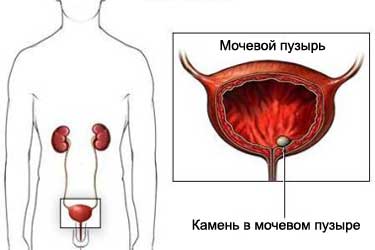Tsistolitolapaksiya
Description tsistolitolapaksii
Cystolitholapaxy is performed in order to, to break up bladder stones into smaller pieces and remove them. Bladder stones are minerals, which arise and are bladder. Stones are broken with a tool called cystoscope using ultrasonic waves or laser.
Reasons for tsistolitolapaksii
The procedure is performed to treat bladder stones.
Possible complications of tsistolitolapaksii
Complications are rare, but no procedure does not guarantee the absence of risk. Before, how to perform tsistolitolapaksiyu, you need to know about possible complications, which may include:
- Urinary tract infections;
- Broken or damaged bladder;
- Bleeding;
- Reaction to anesthesia;
- Infection;
- Damage to internal tissues or organs.
How is tsistolitolapaksiya?
Preparation for the procedure
Your doctor may do the following:
- Conduct a medical examination, assign a blood and urine tests, as well as tests to take pictures in the area of the bladder;
- Discuss the type of anesthesia, to be used in step.
You may be asked to stop taking certain medicines a week before the procedure,:
- Aspirin or other anti-inflammatory drugs;
- Blood thinners, such as warfarin;
- Clopidogrel.
Before the procedure:
- We need to organize a trip home from the hospital;
- If you specify a doctor, Do not eat or drink for eight hours before the procedure.
Anesthesia
This procedure can be done under local, spinal or general anesthesia. Anesthesia will block pain. It can also be used sedative, to reduce anxiety.
When using local anesthesia special gel or liquid is introduced into the urethra (tube, that carries urine out of the body). This numb the area operation. If spinal anesthesia is used, it is introduced into the spine. General anesthesia intravenously through the needle into the arm.
Procedure tsistolitolapaksii
The doctor inserts a tiny flexible probe, called a cystoscope through the urethra into the bladder. At the end of the probe has a camera. Guided US and the testimony of a cystoscope, doctor finds a stone in the bladder. After, the stone is found, Doctor with a special device breaks it into small pieces. It uses a variety of methods – ultrasonic wave, laser or mechanical device. Special pliers or tweezers stone fragments are captured and removed from the urinary tract.
The bladder and surrounding structures will be thoroughly examined. The doctor may place a stent in the urethra, cover to protect it from destruction the remaining fragments of stone.
Immediately after tsistolitolapaksii
Depending on the type of anesthesia, you may be able to move around immediately after the procedure. The catheter in the urethra can be left for a while.
How long will tsistolitolapaksiya?
The procedure is usually performed on an outpatient basis. You will not need to stay overnight in the hospital. The procedure takes 30-60 minutes (or more) depending on the size of stones.
Tsistolitolapaksiya – Will it hurt?
Anesthesia prevents pain during the procedure. Ask your doctor about taking pain, to reduce pain after the procedure.
Caring for the patient after tsistolitolapaksii
Care in a hospital
After the procedure, the hospital staff may provide the following assistance:
- Monitors the vital signs before the end of anesthesia and / or sedation;
- Needle and catheter are removed from a vein;
- Nurse helps to get out of bed and walking support;
- Provided painkillers.
Home Care
When you return home, Follow these steps:, to ensure the normal recovery:
- Take your medicines as directed by your doctor, to reduce pain and the likelihood of infection;
- Avoid physical activity and hard work;
- Drink plenty of fluids (eg, 8-10 glasses a day);
- Do not drive or have sex, until the doctor says it's safe;
- Be sure to follow your doctor's instructions.
Contact your doctor after tsistolitolapaksii
After returning home, you need to see a doctor, If the following symptoms:
- Increasing pressure or pain when urinating;
- Pain in the back or abdomen;
- Inability to urinate;
- Changes in the frequency, Smell, appearance, or volume of urine;
- Signs of infection, including fever or chills;
- Blood in urine or blood clots, not passing through a few days after surgery;
- Painful or burning urination, not passing through a few days after surgery;
- Urinary incontinence.

